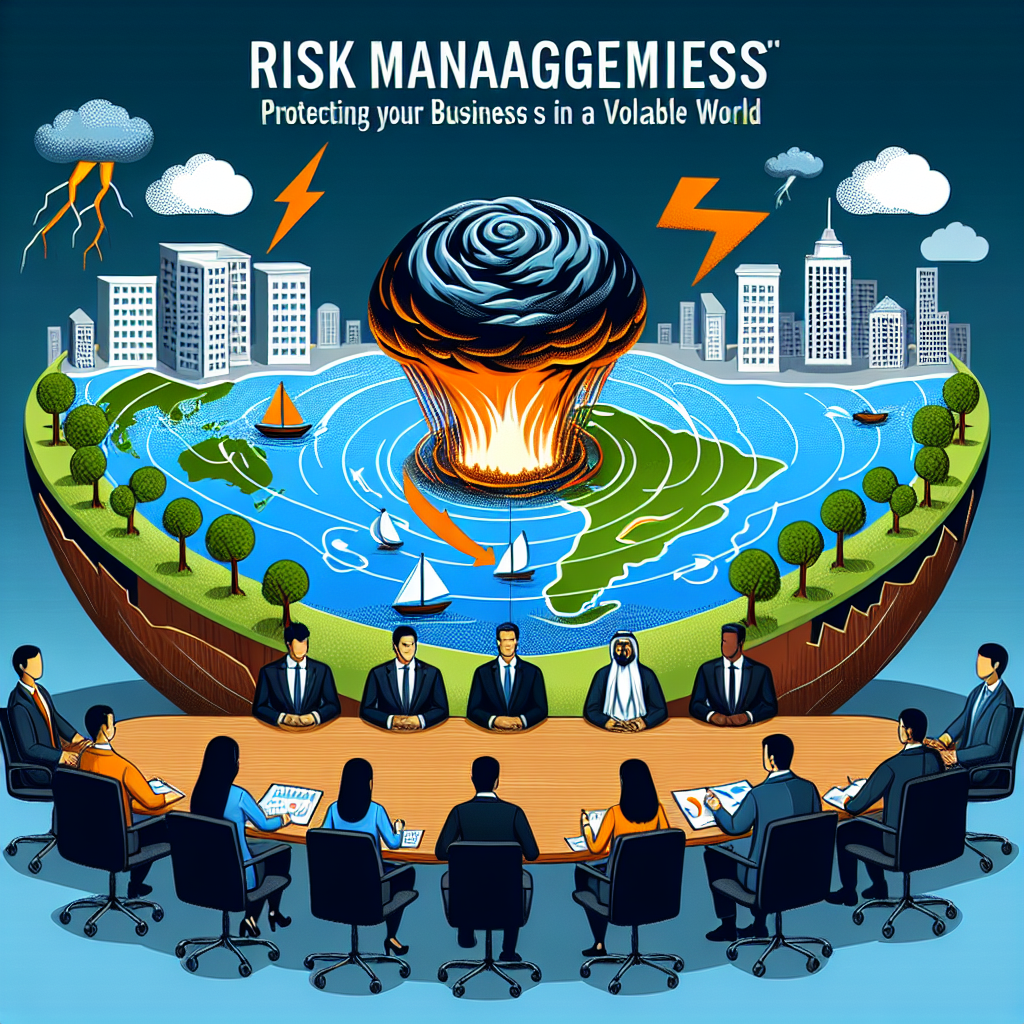In today’s rapidly changing and often unpredictable business landscape, organizations are consistently challenged by various forms of risk. From economic downturns and technological shifts to regulatory changes and natural disasters, the ability to manage these risks is essential for maintaining business continuity and ensuring long-term success. This article explores essential risk management strategies that can safeguard your business against volatility.
The Importance of Risk Management
Risk management is the process of identifying, assessing, and prioritizing risks followed by coordinated efforts to minimize, monitor, and control the likelihood and impact of unfortunate events. Effective risk management not only protects assets but also enhances decision-making, strengthens stakeholder relationships, and fosters a culture of proactive risk awareness.
Types of Risks Businesses Face
Understanding the various categories of risks can inform the development of an effective risk management strategy. Below are the main types of risks many businesses encounter:
1. Financial Risks
Financial risks involve the potential loss of money due to market fluctuations, investment errors, or lack of liquidity. Effective financial risk management includes utilizing hedging strategies, diversifying investments, and maintaining proper cash flow management.
2. Operational Risks
Operational risks arise from inadequate or failed internal processes, systems, or external events. Businesses can mitigate operational risks by implementing robust process controls, investing in technology, and providing employee training.
3. Strategic Risks
Strategic risks occur when a business’s strategies fail to deliver expected results or when external factors disrupt strategic goals. Conducting regular market analysis and fostering agility in strategic planning are ways to address these risks.
4. Reputational Risks
Reputational risks stem from negative publicity or events that damage a company’s image. Building strong community relationships, ensuring high product quality, and maintaining excellent customer service can help mitigate these risks.
Implementing Effective Risk Management Strategies
1. Risk Assessment and Analysis
The first step in developing a risk management strategy is conducting a thorough risk assessment. Identify potential risks, evaluate their likelihood and impact, and prioritize them based on severity. Tools such as SWOT analysis (Strengths, Weaknesses, Opportunities, Threats) can guide this process.
2. Establishing a Risk Management Framework
Establishing a structured framework that outlines risk management policies and procedures is crucial. A framework should define roles and responsibilities, establish communication protocols, and provide clear guidelines for risk reporting and escalation.
3. Developing a Response Strategy
Once risks are identified and prioritized, develop response strategies. Common approaches include:
- Avoidance: Altering plans to sidestep potential risks.
- Reduction: Implementing measures to reduce the impact or likelihood of risks.
- Transfer: Sharing risk with third parties through contracts or insurance.
- Acceptance: Recognizing the risk and preparing to address it if it manifests.
4. Monitoring and Reviewing Risks
Risk management is an ongoing process. Regularly review and monitor risks and the effectiveness of your risk management strategies. Engaging in continuous improvement ensures that your organization is agile and responsive to emerging risks.
5. Fostering a Risk-Aware Culture
Encouraging a risk-aware culture within your organization is imperative. Educate and empower employees at all levels to recognize and report potential risks. This collective awareness can significantly enhance your risk management efforts.
Utilizing Technology for Risk Management
Modern technology provides businesses with innovative tools that streamline risk management processes. Automated risk assessment tools, data analytics, and enterprise risk management (ERM) software can facilitate identification, monitoring, and reporting of risks. Integrating technology into your risk management strategy can improve efficiency and provide comprehensive insights.
Aligning Risk Management with Business Objectives
Risk management should not exist in a vacuum but rather align with overall business objectives. As businesses pursue new opportunities and growth strategies, risk should be an integral part of planning initiatives. This alignment ensures that risk considerations support rather than hinder organizational objectives.
Conclusion
In a volatile world, effective risk management is crucial for protecting your business and ensuring its longevity. By systematically identifying and analyzing risks, establishing robust frameworks, and fostering a risk-aware culture, you can enhance organizational resilience and agility. In doing so, you not only safeguard your assets but also position your business for success in uncertain times. Embrace uncertainty as a challenge and an opportunity, and implement sound risk management strategies to thrive in any environment.
FAQs
What is the primary goal of risk management?
The primary goal of risk management is to identify, assess, and mitigate risks to minimize their impact on an organization’s objectives.
How often should businesses conduct risk assessments?
Businesses should conduct risk assessments regularly, at least annually, and whenever significant changes occur in the organization or its environment.
Can small businesses benefit from risk management strategies?
Yes, small businesses can significantly benefit from risk management strategies. Implementing these strategies can help them safeguard their assets, comply with regulations, and ensure business continuity.
What role does technology play in risk management?
Technology plays a critical role in risk management by providing tools for automated risk assessments, data analytics, and monitoring that enhance efficiency and decision-making.
Is employee training important for risk management?
Yes, training employees is vital because it ensures they understand potential risks, how to identify them, and the procedures to follow in response to various risk scenarios.
#Risk #Management #Strategies #Protecting #Business #Volatile #World
